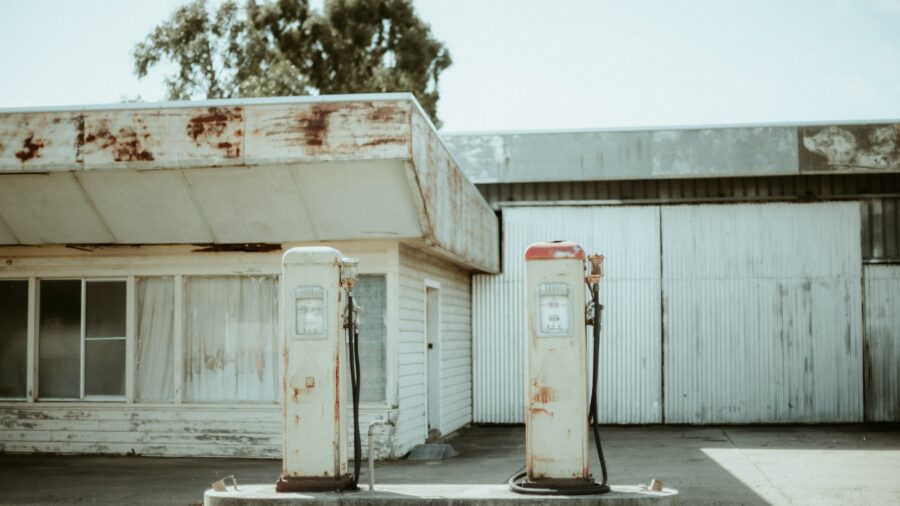Did you know most people visit their local servo about once a fortnight? What’s going to happen if 50% of new car sales by 2030 are electric vehicles? Some say many service stations will be forced to close. Others say it’s an opportunity to create a different kind of servo.
Your servo keeps changing
Your local servo is not immune to change. The entry of Coles and Woolworths into the Australian fuel retail industry 20 years ago was one. Now both supermarkets have stopped selling petrol and sold their service stations.
Australia has about 7,000 service stations selling 90 million litres of petrol and diesel every year. That’s a lot of fuel.
- The average vehicle uses 10.8 litres every 100 kilometres or 1,404 litres if you travel the average 13,000 kilometres each year.
- With a 50-litre tank, that’s about 28 visits to the service station.
In NSW, there are 2,416 service stations selling 32 brands of fuel and 16 fuel types.
Currently 20-30% of all service station revenue comes from selling “chips, chocs and drinks”. For example, 7-Eleven is the second largest retailer of coffee after McDonalds.
However, service stations will be forced to adapt or close if, as the NSW government claims, 50% of new vehicles will be electric by 2030.
Currently, there are only 558 charging locations in Australia, of which 438 are fast chargers (24-99 kW DC) and 120 are ultra-fast chargers (100kW+DC). Clearly, this is far less than will be needed in the future.
What can servo owners do?
Ampol has plans for its network of servos to offer EV fast-charging, hydrogen fuel, local shops, cafes and restaurants, online delivery centres, and even solar generation and battery storage.
Many other servos in dense city areas and busy regional highways could be sitting on valuable real estate so they can’t afford to fall behind. They could potentially find a large market for rapid public EV charging. (It’s hard to imagine motorists spending more than half an hour in a servo for slow charging.)
Currently, almost all owners charge EVs at home. These are more likely to be wealthier early adopters whose homes are well set up up charging. Suburban servos will be forced to compete with home, office and supermarket charging locations.
Time for diversification
Currently, it takes 3-4 minutes to fill up with fuel at a servo and another few minutes buying a packet of chips or drinks.
The most rapid charging of an EV still takes at least half an hour. Servos will need to be more much more comfortable and enticing to encourage vehicle owners to linger longer than usual.
Servos can do two main things (according to peak body for the fuel industry, ACAPMA):
- Energy diversification – sell electricity, hydrogen, natural gas, ethanol and biofuels as well as traditional fuels.
- Revenue diversification – more products and services, lounge areas offering wi-fi, sit-down restaurants, click-and-collect centres, laundry services, co-working sites, meeting rooms, car vacuum cleaning and self-carwash.
However, many servo owners are small and independent. They may not have the capital to invest in a brand new business model with no immediate return. Nobody really knows how fast Australians will adopt EVs or other types of low carbon vehicles.
The future of fuel
It is worth being cautious about predicting the future of traditional fuel. In Norway, the world leader in adopting EVs, 80% cars in Norway are still petrol or diesel, even though 80% of new sales are EVs.
If EVs do make up 50% of new car sales by 2030, as planned, then 50% of new vehicles (and existing vehicles) will still need traditional fuel.
In the next decade, most of the transition to EVs will be in light passenger vehicles. That means heavier vehicles will still need traditional fuel. Meanwhile, the average vehicle is 11 years old, so most vehicles on the road today will continue filling up with petrol and diesel.
This is probably why optimistic servo owners think they will be selling fuel for a long time.


your opinion matters: